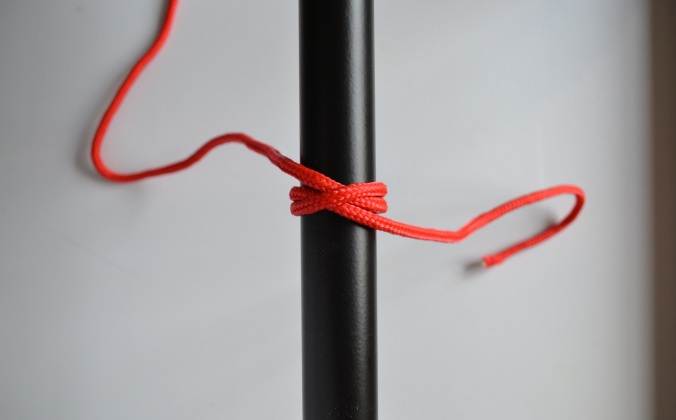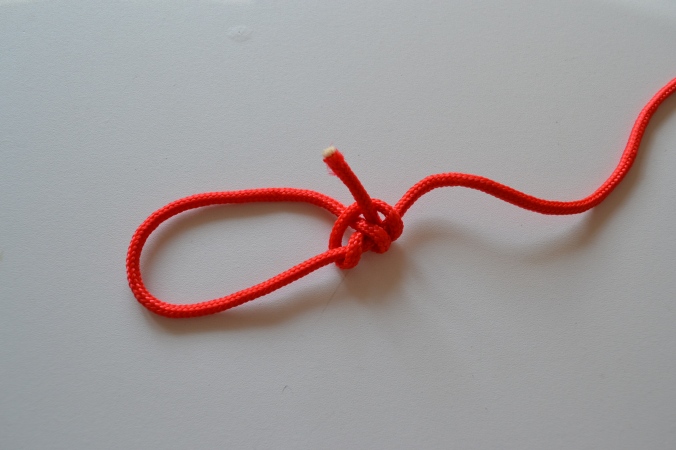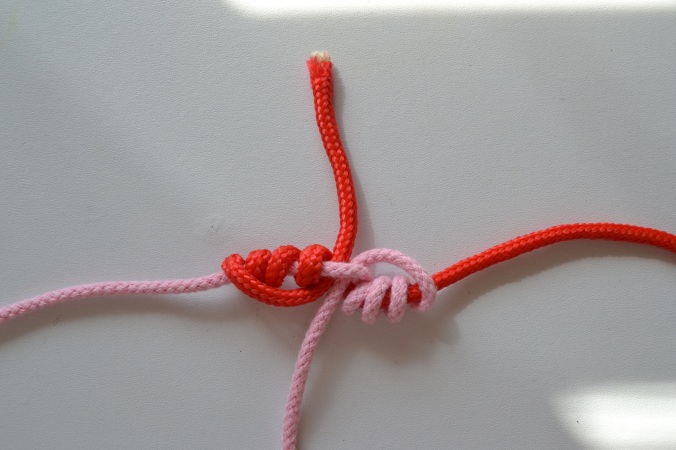02.22.2016
0845
Materials:
- Rope
Tools:
- Pole to test out knots on
As someone who loves to keep extra rope and twine around, it makes sense that I made it a point to learn how to tie knots. But in addition to that, is that I actually carry a 100 foot parachord (Parachute cord) in my snowboarding backpack when I go up to the mountains. If you understand how to tie certain knots in certain situations, that knowledge can help you survive a situation, or help you while working over heights or water. Just knowing how to tie a few knots can still help you in many situations. Here are some knots that might be helpful:
- Reef Knot- This knot is a binding knot for connecting two lines together or a line around an object. It’s simple and effective and it is also known as a square knot.
- Clove Hitch- This knot can secure a line to a tree or post quickly, but it needs an anchor or it will slip.
- Bowline- This knot can create a nonadjustable loop at the end of the line, so the shape stays fixed.
- Figure 8- This knot creates a stopping knot at the end of a line. This prevents the rope from unraveling and can also keep the rope from slipping past another rope.
- Sheet Bend- This technique can tie two different types of rope material together. This knot allows the joining of different thicknesses of rope as well.
- Two Half Hitches- This knot allows a line to be secured to trees or poles
- Taut Line Hitch- This is an adjustable loop knot that will grip as long as there is tension on the “taut” side of the loop. Tension is maintained by sliding the hitch to adjust size of the loop. It can be used to secure tent lines or securing loads on vehicles.
- Improved Clinch Knot- This knot is used to secure a fishing line to a fishing lure or an artificial fly.
- Water Knot- This knot secures webbing, belts and straps together
- Rolling Hitch- A rolling hitch is used to attach a rope to a rod, pole or another rope. It is used for lengthwise pull along an object rather than at right angles. The rolling hitch is designed to resist lengthwise movement for only a single direction of pull.
- Prusik Knot- This knot is a friction hitch and it is used to put a loop of cord around a rope. It is used in climbing, mountaineering and rope rescue.
- Timber Hitch- This hitch will secure a rope around a cylindrical object. It is secure as long as tension is maintained but can be easily untied even after hauling a heavy load of weight.
- Blood Knot- This knot is used in fishing to secure two lines together. It will join sections of nylon line, while maintaining a high portion of the line’s inherent strength.
- Artillery Loop- This knot creates a loop on the bight (the slack part between two ends of a rope). As long as the artillery loop is loaded, it will not slip and contract.
- Carrick Bend- This knot is used to join two lines together. It can be used for heavy rope or cable that is too stiff to bend into other hitches.
If you keep in mind a few of these knots, they may very well help you in dire situations. It is a simple skill to know these knots by heart, but it can be one of the most useful as well. I always use ropes for a number of projects and situations and I have learned that the physics that go into tying a knot is so self sustainable, that I don’t have to worry about much else.















Hey there, You have done a fantastic job. I’ll definitely digg it and individually suggest to my friends. I’m sure they will be benefited from this web site.
LikeLike
I like this web blog very much, Its a real nice position to read and obtain info .
LikeLike
That’s a good idea, I might try that.
LikeLiked by 1 person
I understand how you feel, I have to practice them in order to remember them as well. Depending on the season of the year or upcoming trip (ie. snowboarding, hiking, camping) I usually tend to practice the appropriate knots right before those trips.
LikeLiked by 1 person
Knots are definitely not my forte. I totally need to practice the ones of these that I know, and learn the ones that I don’t, because when I’m regularly practicing, I seem okay at remembering them, but then when it’s been a few months or a year since I last did any, I totally forget. How often do you practice them?
LikeLiked by 1 person